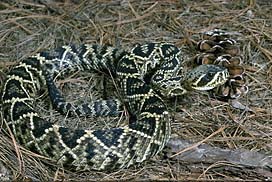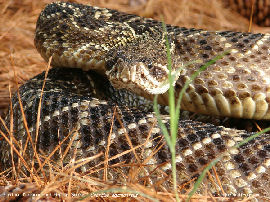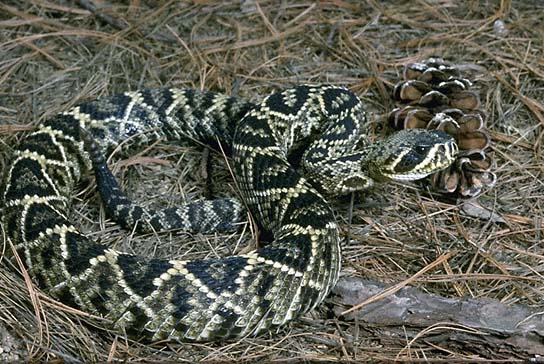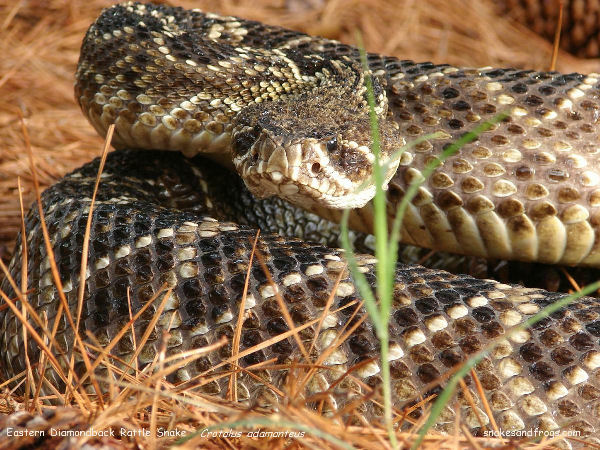Snakes
Description
36-96" (91.4-244 cm). Our largest rattler. Heavy-bodied with large head sharply distinct from neck. Back patterned with dark diamonds with light centers and prominently bordered by a row of cream to yellow scales. Prominent light diagonal lines on side of head. Vertical light lines on snout. Scales keeled, in 27-29 rows.
![]()
Warning
Give this rattlesnake a wide berth; it is the most dangerous snake in North America! Rattlesnakes, Copperheads, and Cottonmouths belong to the pit viper family (Viperidae). These dangerous snakes have a heat-sensitive sensory organ on each side of the head that enables them to locate warm-blooded prey and strike accurately, even in the dark. The curved, hollow fangs are normally folded back along the jaw. When a pit viper strikes, the fangs rapidly swing forward and fill with venom as the mouth opens. The venom is a complex mixture of proteins that acts primarily on a victim's blood tissue. If you hear a rattlesnake shaking its rattle, back away. The snake is issuing a warning, and if the warning is ignored it may bite. Pit vipers are never safe to handle. Even dead ones can retain some neurological reflexes, and "road kills" have been known to bite. How to avoid and treat snakebites
Range
Lower coastal plain, se. North Carolina to Florida Keys, west to s. Mississippi, and extreme e. Louisiana.
Discussion
Stumpholes, gopher tortoise burrows, and dense patches of saw palmetto often serve as retreats for these dangerous snakes. Their numbers have been substantially reduced by extensive land development and by rattlesnake hunters. They eat rabbits, squirrels, birds.




